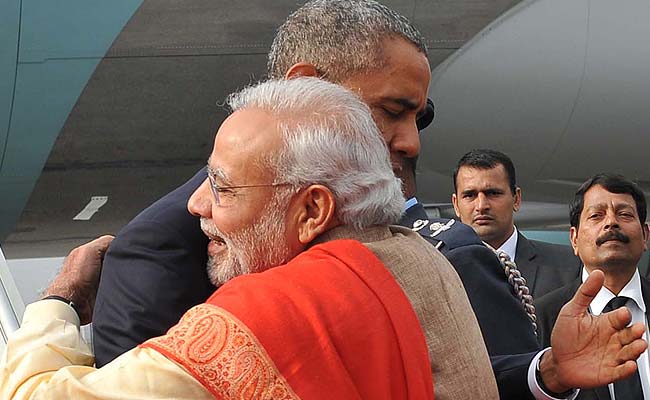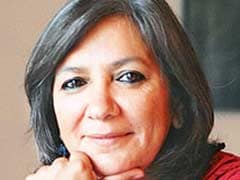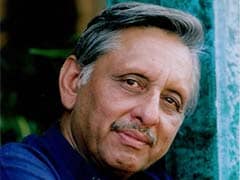- Home/
- Obama-Modi Chemistry 'Appears Genuine': New York Times Editorial
Obama-Modi Chemistry 'Appears Genuine': New York Times Editorial

Part of the improvement in bilateral relations has to do with the personal chemistry between the two, which by all accounts appears warm and genuine. Obama had barely gotten off his plane in New Delhi when he and Modi embraced like old friends. They share humble roots. A visit by Modi to the White House in September went exceptionally well. And there was plenty of colorful symbolism in New Delhi: Obama became the first American president to attend the annual Republic Day parade.
There are strategic imperatives at work as well. Both leaders need to expand their economies, and both see the other as a crucial partner in offsetting China's increasingly assertive role in Asia. The potential for cooperation is considerable. Much of the public focus on the visit was on trade, energy and breaking a logjam that has held up the sale of American nuclear energy technology to India. But when Modi and Obama sat down to talk, the first 45 minutes of the discussion was consumed by China.
Although it has a history of suspicion and rivalry with China, India has acted independently in foreign policy and resisted American efforts to forge a common front. That seems to be changing with Modi, who shares concerns about China's growing economic and military strength and has shown remarkable confidence in striking a new path. He signed a joint statement with Obama chiding the Chinese government for provoking conflict with its neighbors over the South China Sea; suggested reviving a security network involving the United States, India, Japan and Australia; and expressed interest in playing a greater role in the Asia-Pacific Economic Cooperation forum, in which India could help balance China's influence.
China was not happy, dismissing the visit as a "superficial rapprochement." The trick for Obama and Modi will be to stand firm in support of a stable, rules-based order in Asia while not provoking China.
That could be tested by their decision to renew a 10-year defense pact as well as agreements to proceed jointly on developing military hardware, including Raven drones, systems for Lockheed's C-130 transport planes and jet engine technology. India is the world's biggest weapons importer and, just last year, the United States overtook Russia as India's main arms supplier. Modi, who has made economic growth his first priority, is determined to develop an indigenous defense industry. The question is how to do that without fueling a regional arms race.
No real breakthroughs were announced on trade. The Americans have been frustrated with the slow pace of Modi's economic reforms; and the solution that the two leaders claimed to have found to the Indian liability law that has blocked the sales of American nuclear fuel and reactors struck observers as vague and inconclusive. The impasse has long marred a 2006 nuclear deal that was supposed to help energy-hungry India.
The modest movement on climate change was disappointing. India agreed to move to phase down hydrofluorocarbons, or HFCs, in line with a treaty called the Montreal Protocol. But it set no specific goals limiting greenhouse gases, as China did in its meeting with Obama in November. India is the third-largest carbon polluter behind the United States and China but has resisted bolder measures, citing its need to lift hundreds of millions out of poverty. Without India on board with commitments, the best efforts of the rest of the world will not be enough.
Obama could not leave India without addressing human rights. In a speech on Tuesday, he urged India to protect the rights of girls and women, combat human trafficking and slavery, promote religious and racial tolerance, and empower young people. Hopes have faded that Modi would rein in the divisive agenda of his militant Hindu-nationalist supporters. But his plans to build India into an economic powerhouse will mean nothing if the country devolves into division and bloodshed.
With their talk of an "enduring commitment," Obama and Modi have raised expectations and set a firm basis for moving forward. Even so, the countries have no obvious plans to deal with Pakistan or the India-Pakistan nuclear competition that threatens the region, and it cannot be assumed that all past differences will fade. Building a true partnership will take sustained efforts over many decades.
................................ Advertisement ................................
Opinion
MoreOpinion: China Has Helped India's Cause With TrumpMihir Sharma, Bloomberg
Thursday June 29, 2017Very little was expected in India from Prime Minister Narendra Modi's visit to the U.S., and for good reason: Modi had gone out of his way to cultivate a personal relationship with Barack Obama, including famously pouring out a cup of tea for him and the cameras when Obama visited India.
Opinion: Modi's US Speech Was Letter Perfect, Ticked Off Every BoxAshok Malik
Friday June 10, 2016Without taking recourse to the old wailing sheet and cribbing to everyone about Islamabad, Modi has devised a mechanism to shape the debate to India's advantage.
Opinion: Modi Ignored Advice To Make Obama Squirm. It Has Paid Off.Jyoti Malhotra
Saturday June 04, 2016The visit to the US in the coming week, in fact, brings Obama's relationship with both Modi and India full circle.
Blogs: कादम्बिनी के कीबोर्ड से : क्या परमाणु करार पर पीछे हटे हम?
Sunday February 08, 2015असल में परमाणु रिएक्टरों में हादसे की सूरत में जो हर्जाना होगा, वह रिएक्टर चलाने वाले को यानि ऑपरेटर को देना होगा। कानून में यह प्रावधान है कि अगर ऑपरेटर चाहे तो वह सामान और ईंधन आपूर्ति करने वाले पर हर्जाने के लिए दावा कर सकता है। लेकिन यहां पर समझने वाली बात यह है कि ऑपरेटर कौन होगा।
Opinion: Mani-Talk: Modi is Turning Us into America's New PakistanMani Shankar Aiyar
Thursday February 12, 2015In "Cold War II", battlefield could be India, writes Mani Shankar Aiyar.
Opinion: Obama Had Pointed Message for Modi 2.0Shashi Tharoor
Wednesday January 28, 2015Clear warning that PM will fail if he reverts to Modi 1.0, writes Shashi Tharoor.
Opinion: What Pakistan Makes of Obama-Modi ChemistryMehr Tarar
Tuesday January 27, 2015Acceptance of Modi's goal-oriented leadership, writes Mehr Tarar.









